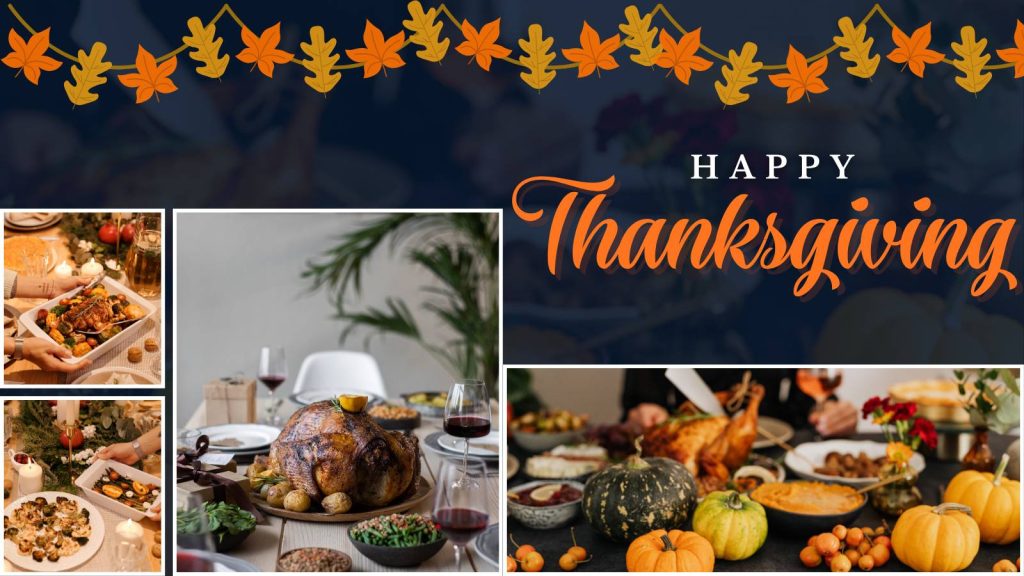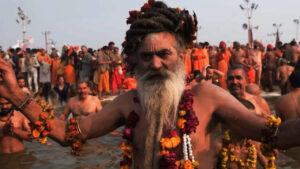Thanksgiving Day is an annual holiday primarily celebrated in the United States and Canada to honor gratitude for the year’s blessings. It is a day when families and communities come together to reflect on achievements, express thankfulness, and strengthen social bonds. Originally rooted in historical harvest celebrations, Thanksgiving Day has evolved into a nationally recognized holiday, featuring traditional meals, cultural events, and acts of charity.
Understanding its meaning, history, and traditions provides insight into why it remains one of the most widely observed and significant holidays in North America.
What is Thanksgiving Day? Meaning and Significance
Thanksgiving Day is more than a festive occasion—it is a celebration of gratitude, reflection, and togetherness. Historically, the holiday marked the successful completion of the harvest season, acknowledging nature’s bounty and the cooperative efforts of communities. In modern times, the significance of Thanksgiving Day extends beyond agriculture. It represents the importance of family bonds, social harmony, and helping those in need.
Many people use this day to volunteer at local charities, donate to food drives, or host meals for less fortunate individuals, emphasizing that the true meaning of Thanksgiving lies in giving and sharing. It is also an opportunity to pause and reflect on personal growth, relationships, and achievements, making it a deeply human and universally relatable celebration.
When is Thanksgiving Day? Dates and Observance
In the United States, Thanksgiving Day is observed on the fourth Thursday of November, a tradition established by President Abraham Lincoln in 1863. This date ensures the holiday coincides with the end of the harvest season, allowing families to gather before the start of winter.
In Canada, Thanksgiving is celebrated on the second Monday of October, reflecting an earlier harvest period due to the country’s climate. Other countries, such as Liberia and parts of the Caribbean, have adopted similar celebrations inspired by North American traditions, though with localized customs.
The variation in dates shows that while Thanksgiving Day is rooted in historical harvest festivals, its core purpose—gratitude and togetherness—remains consistent globally.
History of Thanksgiving Day
History of Thanksgiving Day dates back to 1621, when Pilgrims in Plymouth, Massachusetts, held a three-day feast to celebrate a successful harvest. Native Americans, particularly the Wampanoag tribe, played a critical role in helping the Pilgrims survive their first harsh winter by teaching them essential farming and hunting techniques.
Over the years, Thanksgiving celebrations became local traditions in various colonies, often tied to seasonal harvests and religious observances. In 1863, during the Civil War, President Abraham Lincoln declared Thanksgiving Day a national holiday to promote unity and reflection.
Since then, the holiday has evolved to include parades, football games, and family gatherings, blending historical customs with contemporary cultural practices. The history of Thanksgiving Day is a testament to cooperation, resilience, and the enduring importance of gratitude.
Thanksgiving Day Traditions
Thanksgiving Day is celebrated through a wide variety of customs, many of which have become iconic symbols of the holiday:
- Family Feasts: The Thanksgiving meal is the heart of the celebration, often featuring roast turkey, stuffing, mashed potatoes, cranberry sauce, sweet potatoes, and pumpkin pie. Sharing food strengthens family bonds and allows people to reconnect with loved ones.
- Parades and Sports: Major events, such as the Macy’s Thanksgiving Day Parade in New York City, showcase elaborate floats, balloons, and performances. Football games, both professional and amateur, are also a long-standing tradition, providing entertainment and fostering community spirit.
- Religious and Volunteer Activities: Many families attend church services to express gratitude spiritually. Others engage in volunteer work, serving meals at shelters or participating in food drives, ensuring that the values of giving and sharing are upheld.
- Regional and Cultural Variations: While turkey is a common centerpiece, coastal regions may include seafood, and diverse cultural communities may incorporate international dishes into their celebrations. These variations highlight the adaptability of Thanksgiving traditions and their ability to reflect local and cultural identities.
Famous Thanksgiving Day Quotes
Quotes often capture the essence of Thanksgiving Day more powerfully than words alone. Some of the most notable quotes include:
- “Gratitude turns what we have into enough.” – Anonymous
- “Thanksgiving is a time of togetherness and gratitude.” – Nigel Hamilton
- “Not what we say about our blessings, but how we use them, is the true measure of Thanksgiving.” – W.T. Purkiser
- “Thanksgiving, after all, is a word of action.” – W.J. Cameron
- “Give thanks for a little, and you will find a lot.” – Hansa Proverb
- “Gratitude is the healthiest of all human emotions. The more you express gratitude for what you have, the more likely you will have even more to express gratitude for.” – Zig Ziglar
- “Reflect upon your present blessings, of which every man has plenty; not on your past misfortunes, of which all men have some.” – Charles Dickens
- “Thanksgiving is a joyous invitation to shower the world with love and gratitude.” – Amy Leigh Mercree
- “The roots of all goodness lie in the soil of appreciation for goodness.” – Dalai Lama
- “We must find time to stop and thank the people who make a difference in our lives.” – John F. Kennedy
- “Gratitude unlocks the fullness of life. It turns what we have into enough, and more.” – Melody Beattie
- “Be thankful for what you have; you’ll end up having more. If you concentrate on what you don’t have, you will never, ever have enough.” – Oprah Winfrey
- “Let us be grateful to the people who make us happy; they are the charming gardeners who make our souls blossom.” – Marcel Proust
- “Gratitude makes sense of our past, brings peace for today, and creates a vision for tomorrow.” – Melody Beattie
- “Appreciation is a wonderful thing. It makes what is excellent in others belong to us as well.” – Voltaire
Fun Facts About Thanksgiving Day
- The first Thanksgiving celebration lasted three days.
- The tradition of eating turkey became widespread only in the 19th century.
- The Macy’s Thanksgiving Day Parade began in 1924 and originally included live animals from Central Park Zoo.
- Approximately 46 million turkeys are consumed each Thanksgiving in the United States.
Thanksgiving Day Recipes and Food Traditions
Traditional dishes are central to Thanksgiving Day celebrations:
- Roast turkey with stuffing and gravy
- Mashed potatoes, cranberry sauce, and sweet potatoes
- Pumpkin, pecan, and apple pies
- Green bean casserole and other side dishes
Modern celebrations often include vegan alternatives, international flavors, and creative twists on traditional recipes, allowing families to honor tradition while adding personal touches.
FAQs
1. What is the meaning of Thanksgiving Day?
Thanksgiving Day celebrates gratitude for life’s blessings, including family, health, prosperity, and community. People originally observed it as a harvest festival, and today, they use it to connect with loved ones and reflect on what they value most.
2. When do people celebrate Thanksgiving Day?
People in the United States celebrate Thanksgiving Day on the fourth Thursday of November, while Canadians celebrate it on the second Monday of October. The dates reflect the different harvest seasons in each country.
3. Who started Thanksgiving Day?
The Pilgrims in 1621 started Thanksgiving Day by holding a feast to celebrate a successful harvest. They shared the meal with the Wampanoag Native Americans, who helped them survive their first harsh winter.
4. Why did Thanksgiving Day become a national holiday?
President Abraham Lincoln declared Thanksgiving Day a national holiday in 1863 to unify Americans during the Civil War and encourage citizens to reflect on gratitude and blessings.
5. What foods do people traditionally eat on Thanksgiving Day?
Families traditionally serve roast turkey, stuffing, mashed potatoes, cranberry sauce, sweet potatoes, green bean casserole, and pumpkin pie. Many households also add vegetarian dishes or foods reflecting their cultural background.
6. What traditions do people follow on Thanksgiving Day?
People celebrate by holding family feasts, attending parades like the Macy’s Thanksgiving Day Parade, watching football games, volunteering, and attending religious services. Many also include regional or international foods and customs in their celebrations.
7. Why do Americans eat turkey on Thanksgiving Day?
Americans eat turkey because it provides a large, abundant meal suitable for family gatherings. While the Pilgrims did not serve turkey at the first feast, it became a symbol of Thanksgiving by the 19th century.
8. How do other countries celebrate Thanksgiving Day?
Countries such as Liberia, the Philippines, and parts of the Caribbean celebrate Thanksgiving-inspired events. People combine local customs with the North American focus on gratitude, family gatherings, and feasting.
9. Why do people use Thanksgiving Day quotes?
People use Thanksgiving quotes to inspire gratitude, reflection, and mindfulness. Quotes remind individuals that the holiday is about appreciating relationships, community, and the positive aspects of life, not just food and festivities.
10. How can people celebrate Thanksgiving Day meaningfully today?
People can celebrate meaningfully by expressing gratitude, volunteering in their communities, helping the less fortunate, spending quality time with family, and reflecting on personal growth and achievements. These actions emphasize the core values of Thanksgiving Day: gratitude and generosity.






